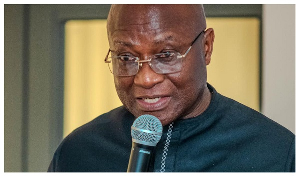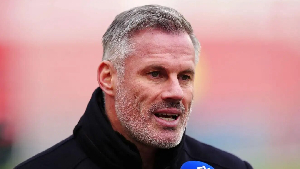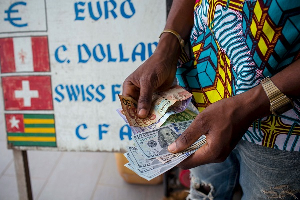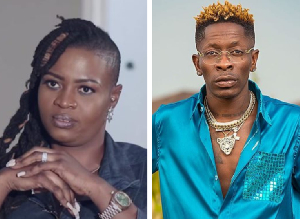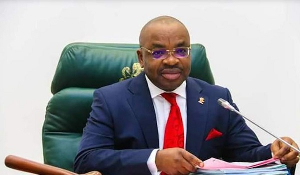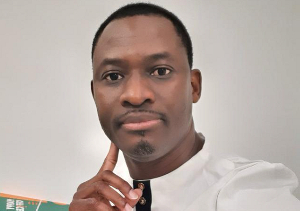Inclusive financial services ; the pathway to economic empowerment of women disabled in Ghana
Persons with disability are persons with a physical, mental or sensory impairment including a visual, hearing or speech functional disability which gives rise to physical, cultural or social barriers that substantially limits one or more of the major activities of that individual .
With a population of about 25 million, Ghana has a disability population of about 7-10% .According to the Ghana National Disability policy document (2000), there are more women with disability than men. Except in the Northern and the Upper East regions, females constitute 55.1 % of the disability population.
In Ghana, as in most parts of Africa, socio cultural dynamics have constrained women in areas of rights, responsibilities and opportunities. Women are disadvantaged when it comes to issues on education, employment, rights and decision making just to mention a few. Stemming from the background that Ghanaian women are disadvantaged because of the primacy of men, women with disabilities are doubly disadvantaged. They are disadvantaged because they are women, and the disability has given them an added disadvantage.
Evidence suggests in most cases that women with disability are poorer than their counterparts without disabilities. For persons who live on less than $1 a day, 1 in 5 has a disability. Employers often resist employing persons with disability especially women because of various reasons. 80-90% of women with disabilities are not employed in the formal sector, so most of them turn to self –employment.They therefore require capital to establish or expand their businesses.
Microcredit is the extension of small loans to entrepreneurs too poor to qualify for traditional bank loans. It has proven an effective and popular measure in the ongoing struggle against poverty, enabling those without access to lending institutions to borrow at bank rates and start small businesses. With the upsurge of microcredit institutions in Ghana, one would have concluded that access to credit facility to establish or grow businesses by women with disability wouldnot be a tussle. The situation is however different.
Access to microcredit, either loans or accumulated savings is an uphill task for women with disability.Though women with disability in Ghana engage in businesses, majority of them lack access to capital and only a limited number of them have access to microfinance services. The economic activities of women with disability therefore remain small.
Some of the barriers to access to microcredit facilitiesfor women with disability in Ghana are as follows;
Firstly, the attitudes of staff of Micro Finance Institutions (MFIs) whether deliberately or unconsciously, exclude persons with disability especially women from accessing the services. Personnel or staff of MFIs often lack the necessary experience and training to distinguish between real credit risk and perceived credit risk of persons with disability. They are not able to see through the disability and recognize the real ability ofpersons with disability. They therefore assess persons with disability through the spectacles of inability and the lens of poverty rather than the set criteria for credit facility
Secondly, methodologies for accessing credit practice by MFIs often hinders persons with disabilities (PWDs) especially women from participating in micro finance services. Example is weekly payment of loans. Mobility challenges make weekly instalments a great obstacle for persons with disability especially women. In some instances, PWDs will have to rely on the assistance of family members or friends (who are at times not available) before they could visit micro finance institutions. Other examples of service design that serve as barriers include compulsory upfront savings, high interest rates (20% -40%) on loan amount, and short repayment time.
thirdly, The micro finance model that renders services based on different types of group methodologies like solidarity group , market women group , or village banks where members themselves decide who to include in the group, gives them the prerogative to exclude persons with disability especially women. Most often, the groups fail to accept persons with disability as group members. -Stigmatization discourages other members to include persons with disability.
Low Self-esteem
Fourthly, it is opined that persons with disabilities often experience exclusion and rejection, and this over a long period leads to low self-esteem. This makes them exclude themselves from social and private services like micro finance.
Finally, most Micro Finance Institutions are not accessible to persons with disability especially those using wheel chairs, callipers or low vision. Some of the offices are located on 2nd or 3rd floors and those on the ground floors do not have ramps. The markings on the doors and walls are not friendly to persons with low vision. This situation prevents persons with disability from visiting the offices of MFIs.
Persons with disability again have challenges in accessing information on microfinance services. MFIs give information on products in both verbal and written forms. Most of this information is inaccessible to many persons with disability especially those who are hearing and visually impaired.
The aforementioned barriers in addition to other challenges ranging from societal discrimination, limited access to education, health and employment among others have complicated the situation of women with disability in Ghana. Thus in spite of developments in the financial sector, access to microcredit to establish or grow businesses for women with disability is still a tussle. Closely related to this situation is the fact that, in many cases they experience difficulty in getting life partners as compared to men with disability. Divorce rate among women with disabilityis very high.There are situations where women with disabilities are ridiculed and their babies taken away from them.Even in modern cultures, we have heard of incidents where women with disabilities are viewed as a curse to their families, or as punishment for sins committed by family members.
Like any other women, Women with disability are primary care givers and the first agent of socialization yet they have limited access to social services. Some in the quest to find alternative ways of surviving, resort to begging for alms.
How could we make this segment of the Ghanaian population viable so they can contribute their quota to the development of themselves, families and the nation as a whole?
Access to microcredit is a major tool to poverty reduction and has proven to economically and socially empower women with disability worldwide. Grameen Bank, established in 1983 in Bangladesh, declared that microcredit is one of the most effective and flexible strategies in the fight against global poverty: “It is sustainable and can be implemented on the massive scale necessary to respond to the urgent needs of those living on less than $1 a day
The challenge as a country now is how best do we remove these barriers for persons with disabilities to be mainstreamed into micro financial services?
For the past 2 years, the Ghana Blind Union has piloted a project aimed at mainstreaming persons with visual impairment into financial services with3 selected rural banks ( Odotobire, Ada and Larwa ) in the Ashanti, Greater Accra and Upper West regions. The project simply engaged the said rural banks to consciouslyextend their services to youth and women with visual disability operating their own businesses. The businesses they do include poultry,palm oil extraction, groundnut oil extraction, shea butter extraction, neem seed oil extraction, bead work, and retail of provision, cookware among others.
Under this project, the banks trained persons with visual impairment in basic financial procedures, modify the interest rates on loans for visually impaired clients and arrange a suitable period for collection of savings and loans from visually impaired clients. Within the spade of two years, over 150 women with visual disability in the 4 districts ( Lawra, Bewei, Ada,Obuasi) gained economic and social empowerment. Theyadditionally gained financial literacy. They now save regularly to build capital. A number of them have expanded their businesses andare able to take care of themselves and their families.Many of them now participate in social activities such as funerals, marriage ceremonies and among others. They are contributing their quota to social and national development. This has given them a sense of fulfilment and recognitionas members of their communities.
In many respects the outcome of the Ghana Blind Union project confirmsthe declaration of the Grameen Bank in Bangladesh that ‘microcredit is one of the most effective and flexible strategies in the fight against global poverty’. It is sustainable and can be implemented on the massive scale to reduce poverty among women and youth with disability.
The urgent call on stakeholders in the financial sector is to review the designs of theirservices and modify their products to mainstream the needs of persons with disability especially women and youth so they can be included in access to micro financial services
Inclusive financial services is the way forward for the nation to attain economic development that will ensure that all members of the social collective are part of the process.
By; Ms Elizabeth Ladjer Bibi Agbettor
lizbettyy@yahoo.com
0244704266
Opinions of Wednesday, 11 May 2016
Columnist: Agbettor, Elizabeth Ladjer Bibi






